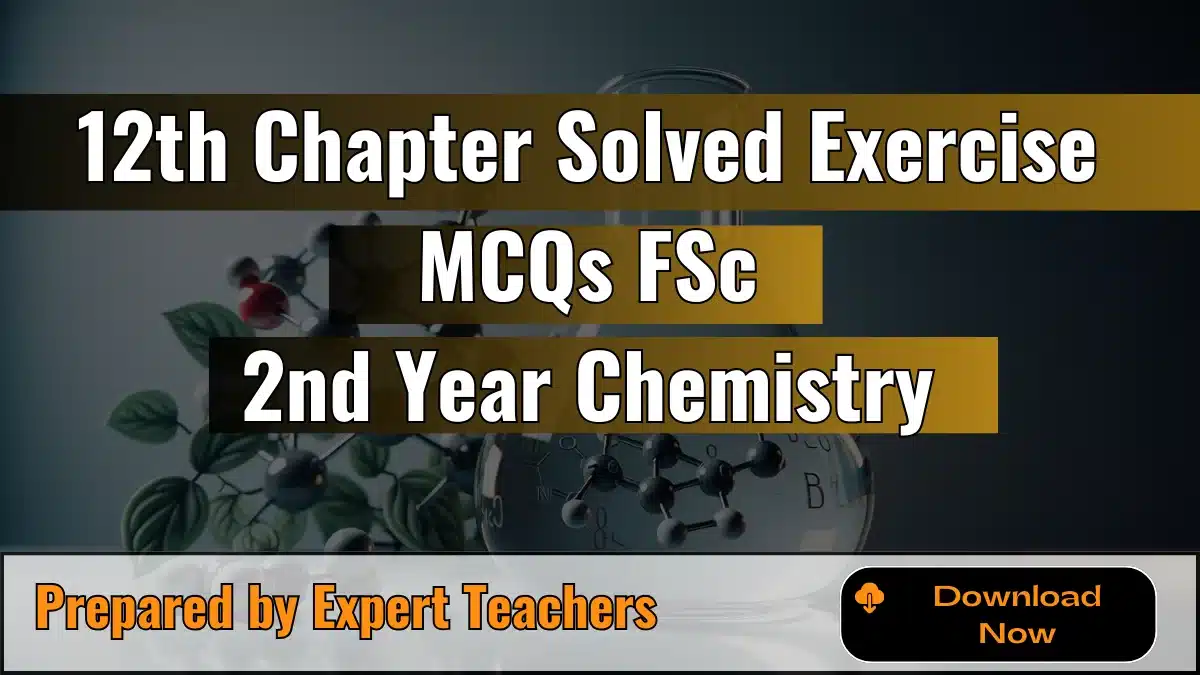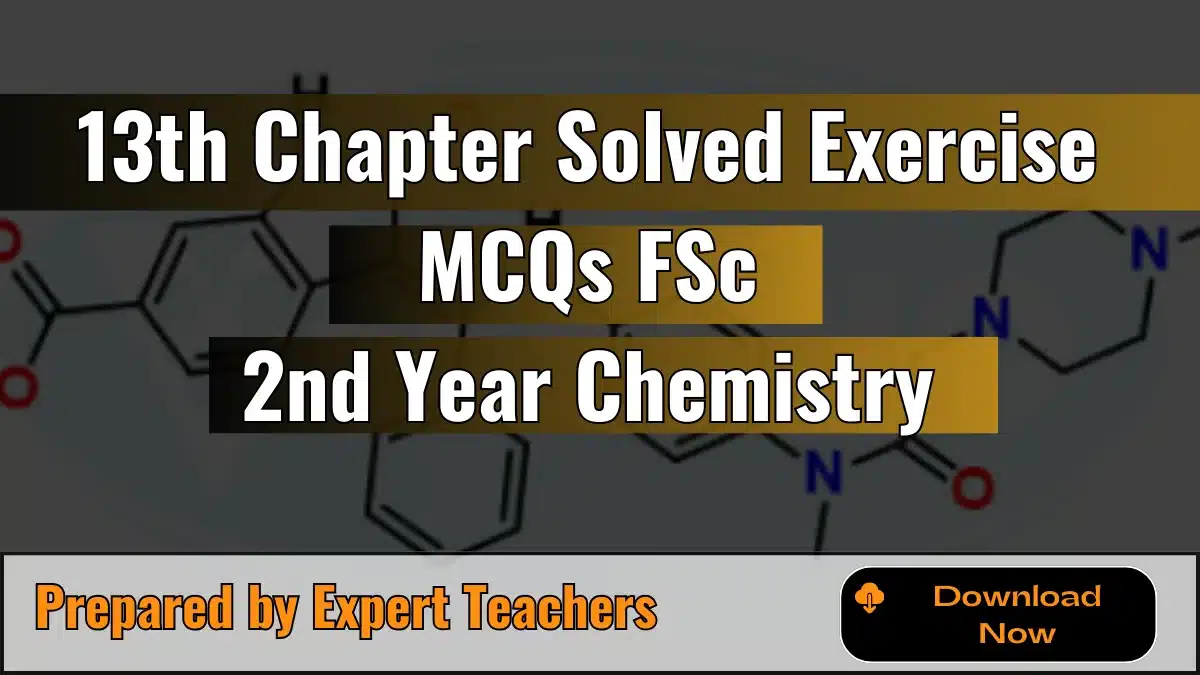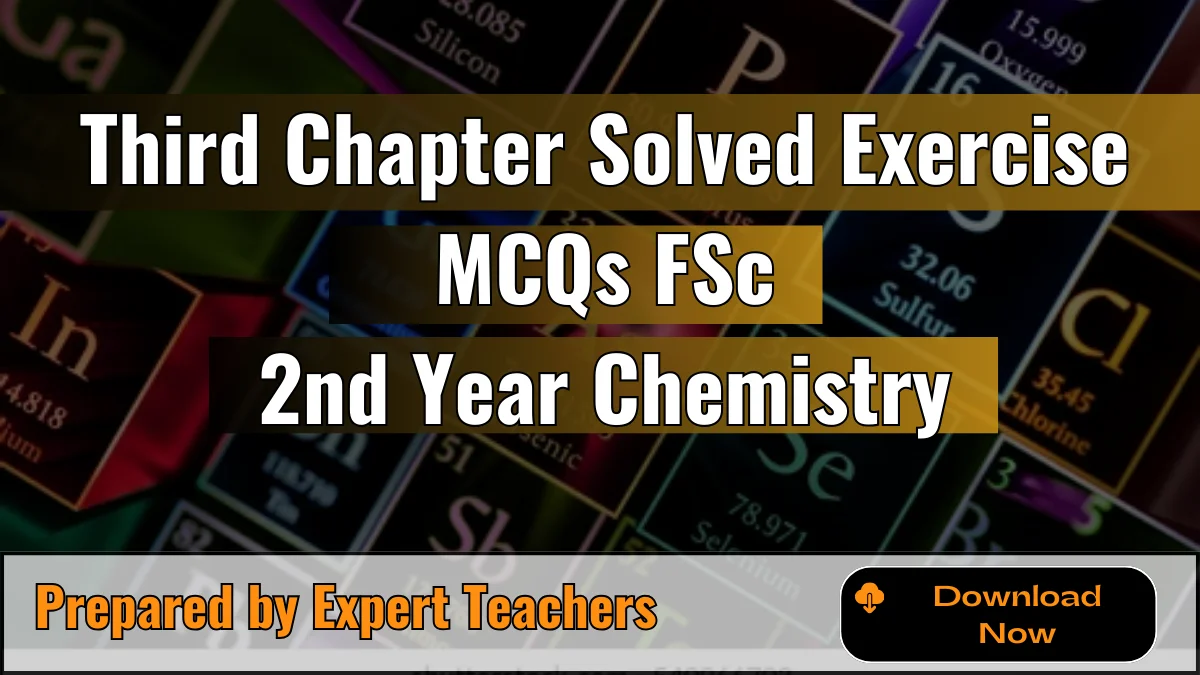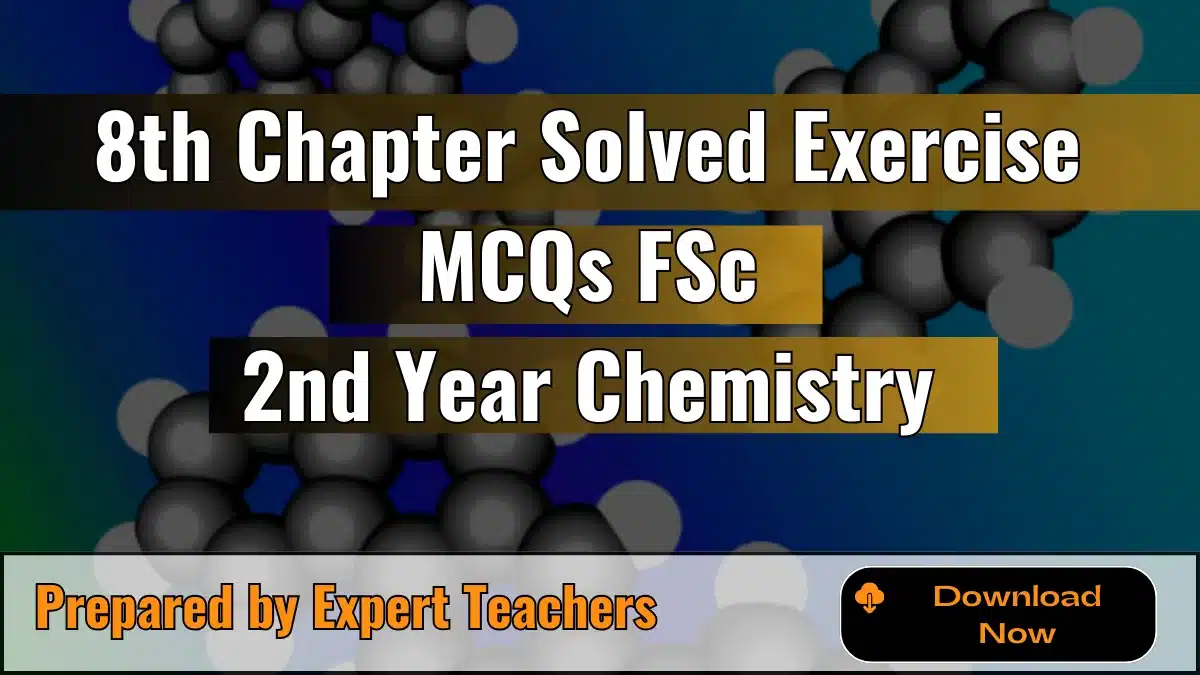Second Chapter Solved Exercise MCQs of FSC First Year Chemistry
The 2nd chapter Solved Exercise MCQs of FSC 1st-year Chemistry offers a comprehensive collection of multiple-choice questions with answers. Each question is accompanied by a short explanation to clarify the correct choice. These solutions aim to assist students in exam preparation by simplifying complex concepts and building a strong foundation for success.
Second chapter solved MCQs with explanation
1. A filtration process could be very time consuming if it were not aided by a gentle suction which is developed:
(a) if the paper covers the funnel up to its circumference.
(b) if the paper has got small sized pores in it.
(c) if the stem of the funnel is large so that it dips into the filtrate.
(d) if the paper fits tightly.
Explanation: The correct answer is (d). Because when the filter paper fits tightly in the funnel, it ensures that there are no gaps through which the liquid can bypass the paper, improving the effectiveness of the filtration. The tight fit also helps in maximizing the suction effect by maintaining consistent contact between the paper and funnel, leading to faster filtration.
2. During the process of crystallization, the hot saturated solution:
(a) is cooled very slowly to get large sized crystals.
(b) is cooled at a moderate rate to get medium sized crystals.
(c) is evaporated to get the crystals of the product.
(d) is mixed with an immiscible liquid to get the pure crystals of the product.
Explanation: The correct answer is (a). Because this slow cooling helps the crystals to grow larger and more well-defined, as the solute has more time to arrange into a regular lattice structure. If the solution is cooled too quickly, smaller crystals or even a crystalline powder may form instead.
3. Solvent extraction is an equilibrium process and it is controlled by:
(a) law of mass action.
(b) the amount of solvent used.
(c) distribution law.
(d) the amount of solute.
Explanation: The correct answer is (c). Solvent extraction is governed by the distribution law (also known as the partition law), which states that a solute distributes itself between two immiscible solvents in a constant ratio at equilibrium. This law is fundamental in understanding how solutes move between different phases during the extraction process.
4. Solvent extraction method is a particularly useful technique for separation when the product to be separated is:
(a) non-volatile or thermally unstable.
(b) volatile or thermally stable.
(c) non-volatile or thermally stable.
(d) volatile or thermally unstable.
Explanation: The correct answer is (a). Because solvent extraction is best for separating substances that are non-volatile (don’t easily evaporate) or thermally unstable (break down with heat). This method avoids heating, which helps in separating these kinds of substances.
5. The comparative rates at which the solutes move in paper chromatography depend on:
(a) the size of paper.
(b) R values of solutes.
(c) temperature of the experiment.
(d) size of the chromatographic tank used.
Explanation: The correct answer is (b). Because in paper chromatography, solutes move at different rates based on their Rf values. The Rf value shows how far each solute travels compared to the solvent. Solutes with different Rf values move at different speeds on the paper, making this the key factor in their movement.







Leave a Reply